- Search
THREAD
home > category > thread > thread

USED FOR
Colour is our main priority on choosing thread, off white for linings and colour match for face fabrics. We mainly use polyesters.
Lining is used to neaten the back of curtains and blinds. Protect fabric from fading and in some cases increase thermal and blackout properties.
There are 3 types of interlining we use in the workroom
LINING
home > category > linings > lining
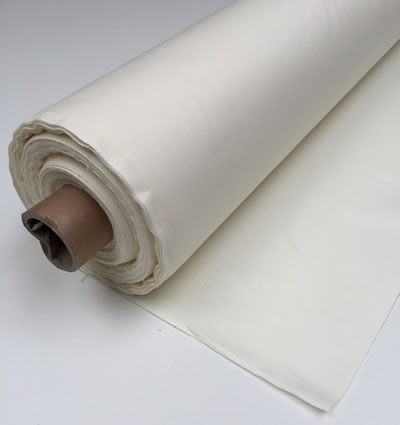
USED FOR
Lining the back of CURTAINS & ROMAN BLINDS
The choice of linings can be a bit bewildering. We have written a detailed guide explaining the options and termininology HERE.WHAT WE USE
After trying many linings in the workroom over the years the one we use and recommend to back virtually all our curtains and blinds is a very high quality cotton rich poly/cotton that we think has the best weight, drape, and feel for our customers' curtains and blinds.
(check/add colour info)BLACKOUT LINING
home > category > linings > blackout lining

USED FOR
BLACKOUT CURTAINSBLACKOUT ROMAN BLINDS
Blackout lining is used to block light and reduce air passing through a curtain or blind making it more thermally efficient. (see our article on linings for more info). It can be used instead of cotton lining in curtains to make blackout curtains and is inserted inside blackout roman blinds. It is heavier, stiffer and has a more rubbery feel than cotton lining.
(check/add colour info)WHAT WE USE
We use a 3 pass supersoft blackout lining.
COMBINED BLACKOUT INTERLINING
home > category > linings > comb blackout interlining

USED FOR
BLACKOUT INTERLINED ROMAN BLIND
Combined Blackout lining is also called Bonded Blackout lining. The blackout layer blocks light and reduces air passing through a curtain or blind making it more thermally efficient. The bonded interlining layer makes the lining thicker, softer and slightly more sumptuous (see our article on linings for more info). It can be used instead of cotton lining in curtains to make blackout curtains and is inserted inside blackout interlined roman blinds. It is heavier, thicker, stiffer and has a more rubbery feel than cotton lining.
Interlining is used to make curtains and blinds, thicker, more sumptuous and increase their thermal insulating properties.
There are 3 types of interlining we use in the workroom
Plus we also use a COMBINED BLACKOUT INTERLINER For more info (see our article on interlinings)
SARILLE INTERLINING
home > category > interlinings > sarille interlining
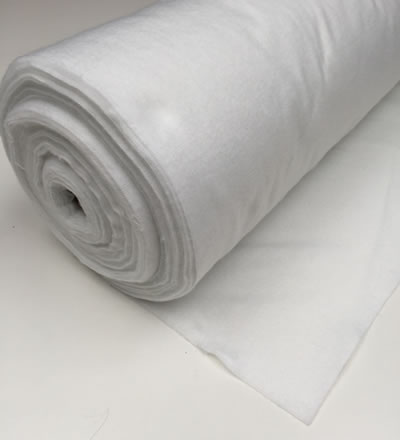
USED FOR
INTERLINED CURTAINSINTERLINED ROMAN BLINDS
WHAT WE USE
Sarille is a synthetic (usually polyester) interlining and is a good choice for a beginner as it is more stable and therefore easier to use than domette or bump. We make the majority of our interlined roman blinds and light/medium weight interlined curtains with it.
DOMETTE INTERLINING
home > category > interlinings > domette interlining

USED FOR
INTERLINED CURTAINS INTERLINED ROMAN BLINDS
Domette interling is usually 100% cotton and lighter in weight than Bump interlining (300gsm-150gsm). It is liked because it is a traditional material and a natural product. It does have the downside though of shrinkage and being quite dusty when cutting and working with.
WHAT WE USE
We use pre-shrunk domette to help reduce problems with movement and shrinkage.
BUMP INTERLINING
home > category > interlinings > bump interlining

USED FOR
Bump interlining is the heaviest, thickest interlining. Loosley woven and about 350-400gsm. Usually 100% cotton like domette it is susceptible to shrinkage and being quite dusty when cut and worked with.
It is a good choice for making a thick heavy door curtain.
WHAT WE USE
We use pre-shrunk bump interlining to help reduce problems with movement and shrinkage.
COMBINED BLACKOUT INTERLINING
home > category > interlinings > comb blackout interlining

USED FOR
BLACKOUT INTERLINED ROMAN BLIND
Combined Blackout lining is also called Bonded Blackout lining. The blackout layer blocks light and reduces air passing through a curtain or blind making it more thermally efficient. The bonded interlining layer makes the lining thicker, softer and slightly more sumptuous (see our article on linings for more info). It can be used instead of cotton lining in curtains to make blackout curtains and is inserted inside blackout interlined roman blinds. It is heavier, thicker, stiffer and has a more rubbery feel than cotton lining.
PENCIL PLEAT HEADING TAPE
home > category > curtain sundries > pencil pleat heading tape
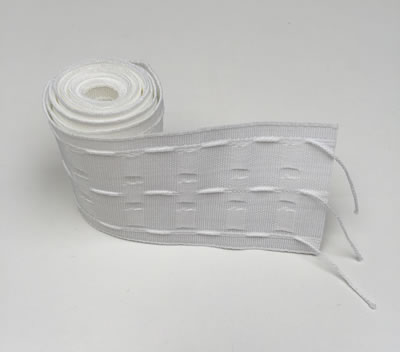
USED FOR
LINED PENCIL PLEAT CURTAINS INTERLINED PENCIL PLEAT CURTAINS
Pencil pleat tape comes in various depths, we use a 3in tape in most cases (long and short pencil pleat curtains ). You can get it various depths from 1in 6in.
Narrow xin tape is used to make a cottage header.
WHAT WE USE
7.5cm (3in), 2.5 fullness ratio pencil heading tape, white, with 3 woven pockets to accept either metal or plastic curtain hooks. Pencil pleat tape is relatively inexpensive and it is worth paying a little bit more for a better quality tape that will sag less on the hook attachments.
1in tape for cottage header
BUCKRAM
home > category > curtain sundries > buckram
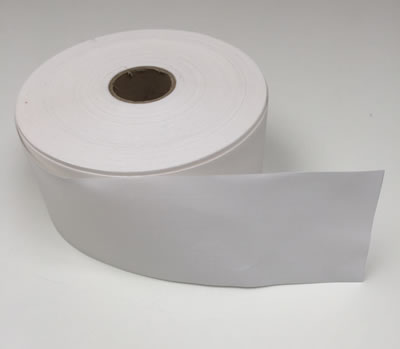
USED FOR
LINED HANDPLEATED CURTAINSINTERLINED HANDPLEATED CURTAINS
Buckram is inserted into the heading of hand pleated curtains to stiffen the fabric to form the pleats. We also insert it into the heading of roman blinds to help them hold their shape. It comes in different weights (stiffness) and depths 4"-8". You cut it down to a specific depth if required
Fusible Buckram has a layer of adhesive applied to one or both sides that melts when the heat of an iron is applied. It is ironed when inserted in the fabric layers to melt the glue and fuse it with the fabric when the glue cools.
WHAT WE USE
Sanforised minimum shrink, various depths depending on curtain design.
The depth of the buckram is a design choice for the size of pleat you are creating, the majority of buckram we use is 4" or 5".
LINED CURTAINS medium weight NON-fusible
INTERLINED CURTAINS medium weight NON-fusible
ROMAN BLINDS heavy or medium weight NON-fusible
For curtains we personally find heavy weight buckram is too stiff and difficult to sew through, so we gemnerally don't use it.
WEIGHTS
home > category > curtain sundries > weights

USED FOR
Weights are sewn into the hem of lined and interlined curtains to give them more weight.
WHAT WE USE
Covered Square Lead-penny weights.
home > category > curtain sundries > lead weight rope
LEAD WEIGHT ROPE

USED FOR
Used as an aternative to lead weights in curtains, and for weighting in blinds that do not have a bottom bar.
WHAT WE USE
Lead-weight rope 25g to sew into lined curtain hems.
CURTAIN PLASTIC HOOKS
home > category > curtain sundries > plastic curtain hooks

USED FOR
Plastic hooks are used to attach a curtain made with a tape header to a pole or track. They hook through loops on the heading tape and eyelets on the curtain/track.
Plastic hooks are relatively inexpensive so it is always worth spending a little extra on good quality strong hooks.
WHAT WE USE
You can use white plastic hooks on curtains but we prefer to use zinc brass plated.
BRASS CURTAIN HOOKS
home > category > curtain sundries > brass curtain hooks

USED FOR
Brass hooks are used to attach a curtain made with a tape header to a pole or track. They hook through loops on the heading tape and eyelets on the curtain/track. Solid brass metal tape hooks will never rust, are the highest quality option for a curtain hook, but are expensive. Zinc brass coated hooks offer a cheaper alternative.
WHAT WE USE
Zinc brass plated hooks
We often look for the highest quality in what we supply, but in this instance we feel the expense of solid brass isn't really justified as zinc brass plated hooks do just as good a job at hanging the curtains.
CURTAIN PIN HOOKS
home > category > curtain sundries > curtain pin hooks

USED FOR
Pin hooks are used to attach curtains with hand pleated headings to tracks and curtain poles. They are pushed into the buckram and the hook end passes through the eyelet on the track/pole.
WHAT WE USE
Push-in nickel-plated metal hooks
Amazon Paid Links
Buy Here 40 pin hooks
Buy Here 100 pin hooks
HEADRAIL CASSETTES
home > category > roman blind sundries > headrail cassettes

USED FOR
Aluminium headrails with a chain loops, are used instead of a traditional wooden batten acorn and cleat to raise and lower a blind.
headrails should be supplied with fixing brackets, cords, a chain loop and child safety solutions for the chain loop and cords. The standard gear ratio is 1:1 for wider heavier blinds you will need a gearing usually a 1:3 or 1:4 gear ratio.
The child safety solution usually takes the form of a pull out disc or chain tensioner to attach to the wall for the chain loop and breakouts to attach to the back of the blind for the cords.
Headrails often come as part of a kit that includes rods, bottom bar and rod pocket tape.
WHAT WE USE
We use what we consider to be the highest quality available headrail on the market. Unfortunately it is purchased from a trade only wholesaler and is not available retail.
VELCRO LOOP TAPE
home > category > roman blind sundries > velcro loop tape

USED FOR
PELMET BOARDS ROMAN BLINDSVecro loop tape is used to attach roman blinds to headrails, valances, swags and tails to pelmet boards and curtain returns to a wall . It has NO adhesive on the back.
The loop tape is sewn to the back of the blind, curtain or top treatment.
It generally comes in 20mm??? (3/4in) or 50mm (2in) depth
WHAT WE USE
We use both sizes depending on the application, and prefer to use 50mm on roman blinds.
VELCRO HOOK TAPE
home > category > roman blind sundries > velcro hook tape

USED FOR
PELMET BOARDS ROMAN BLINDS
Vecro hook tape is used to attach roman blinds to headrails, valances, swags and tails to pelmet boards and curtain returns to a wall . It has adhesive on the back.
The hook tape is stuck and stapled to the attachment area on wooden battens and pelmet boards.
WHAT WE USE
20mm hook tape adhesive backed.
RODS
home > category > roman blind sundries > rods

USED FOR
Rods are inserted into Roman blind rod pockets to help the blind hold it's shape when pulled up and down.
Rods come in various diameters and can be wooden or fibreglass .
WHAT WE USE
4mm diameter white fibreglass rods and white plastic end caps for finishing the end of the fibre glass rods preventing fabric damage for roman blinds
4mm diameter transparent rods for unlined voile and sheer blinds.
BOTTOM BAR
home > category > roman blind sundries > bottom bar

USED FOR
Bottom bar is used give weight to the bottom of a Roman blind and hold it's shape.
WHAT WE USE
White flat aluminium bottom bar approx 25mm wide and clear plastic end caps for finishing the end of the flat bottom bars preventing fabric damage.
RINGS
home > category > roman blind sundries > rings

USED FOR
Rings are sewn on to the back of a roman blind where breakouts are not required to guide the cords. You can use plastic or hollow brass rings.
WHAT WE USE
Hollow brass rings 11mm diameter on roman blinds
Transparent rings for unlined voile and sheer blinds.
BREAKOUTS
home > category > roman blind sundries > breakouts
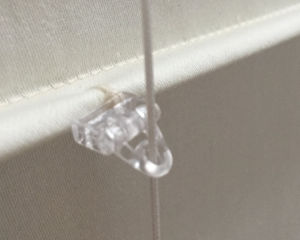
USED FOR
Break outs come as part of a headrail/batten kit. They come in various guises generally clip on when using rod pocket tape and sew on when making traditional rod pockets. The placement and number of breakouts will be dictated by the kit.
WHAT WE USE
Sew on breakouts supplied and specified with the headrails we use
ROD POCKET TAPE
home > category > roman blind sundries > rod pocket tape

USED FOR
Rod pocket tape can be used instead of making traditional rod pockets from a roman blind lining.
WHAT WE USE
We do not make Roman blinds with rod pocket tape. We prefer the look and quality of traditional rod pockets. The only exception is where we would use transparent rod pocket tape making an unlined voile or sheer blind.
WOODEN BATTEN
home > category > roman blind sundries > wooden batten
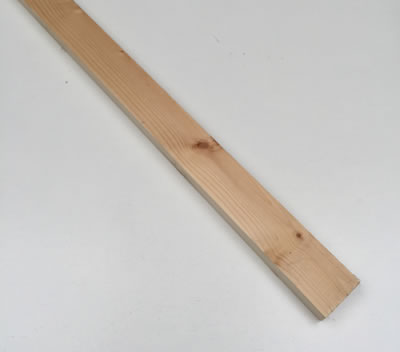
USED FOR
A wooden batten was traditionally used to make the headrail of a roman blind before headrail mechanisms.
Batten are usually softwood and approx 18mm by 34mm
WHAT WE USE
We no longer make wooden headrail battens due to the difficulty in adding a consistent reliable child safety system. We advise you use a child safety compliant headrail kit.
SCREW EYES
home > category > roman blind sundries > screw eyes

USED FOR
ROMAN BLIND BATTENS PELMET BOARDS
1. Brass screw eyes for use on larger blinds
2. Screw eyes for use on smaller and lighter blinds.
Large and small eyelets used in blind battens, the size used depends on size and weight of blind. Large eyelets are also used on pelmet boards to hook a curtain in position at the ends of the pelmet.
WHAT WE USE
We no longer make headrail battens due to the difficulty in adding a consistent reliable child safety system.
CORD
home > category > roman blind sundries > cord
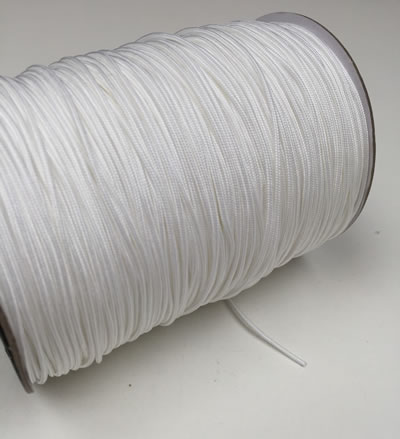
USED FOR
White braided blind cord 1.2mm for stringing roman blinds.
WHAT WE USE
We no longer make wooden headrail battens due to the difficulty in adding a consistent reliable child safety system. We advise you use a child safety compliant headrail kit.
ADJUSTABLE CORD TOGGLE
home > category > roman blind sundries > adjustable cord toggle

USED FOR
Adjustable Toggle to hold the blind cord on the bottom ring/breakout of the blind, removing the need to tie the cord to the bottom ring/breakout and making adjustment easy.
WHAT WE USE
We use the toggles supplied with our headrails
ACORN
home > category > roman blind sundries > acorn

USED FOR
In a traditional wooden batten roman blind the cords would be threaded through the blind and be knotted together at the end, the knot would be hidden by an acorn.
This type of system is not compliant with modern child safety legislation. There are solutions on the market where cords are joined together in a connector that breaks apart at a certain load. A single cord hangs down from the connector to which an acorn is attached on the end.
WHAT WE USE
We no longer make wooden headrail battens due to the difficulty in adding a consistent reliable child safety system. We advise you use a child safety compliant headrail kit.
CLEAT
home > category > roman blind sundries > cleat

USED FOR
In a traditional wooden batten roman blind the cords would be held to the wall wrapping them around a cleat.
Note many countries have child safety rules regarding the lowest height the cleat can be fixed and whether any excess cord is allowed to hang from the cleat.
WHAT WE USE
We no longer make wooden headrail battens due to the difficulty in adding a consistent reliable child safety system. We advise you use a child safety compliant headrail kit.
CUSHION PADS
home > category > cushion sundries > feather cushion pad

USED FOR
Cushion pads fill the cushion cover. Feather pads will give you a soft squashy cushion. If you are not happy using animal products, there are other altenative fillings such as polyester, wool and husks.
WHAT WE USE
Feather in many shapes and sizes.
PIPING CORD
home > category > cushion sundries > piping cord

USED FOR
CUSHIONS SEAT PADS PELMET TRIM BED VALANCES LOOSE COVERS
Piping cord is used to fill piping trim. It comes in various thicknesses.
WHAT WE USE
Various sizes depending on the design of the cushion, 4mm or 5mm is a common size we use.
ZIPS
home > category > cushion sundries > zips
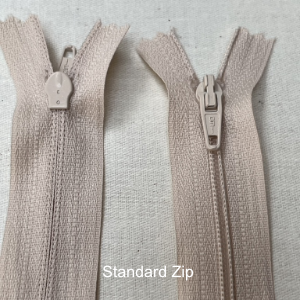
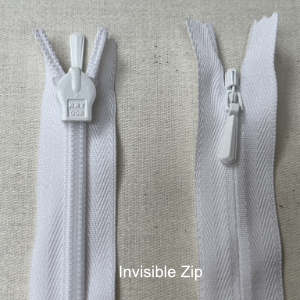
USED FOR
There are 2 types of zip we use "invisible zip and standard zip.
Zips come in various lengths and can be cut down to size, matching the zip colour to the cushion fabric is also a consideration.
WHAT WE USE
45cm (18in) zip medium-weight light beige
A perfect weight for scatter cushions in a carefully chosen neutral colour to go with many fabrics.


 CUSHION COURSE
CUSHION COURSE








